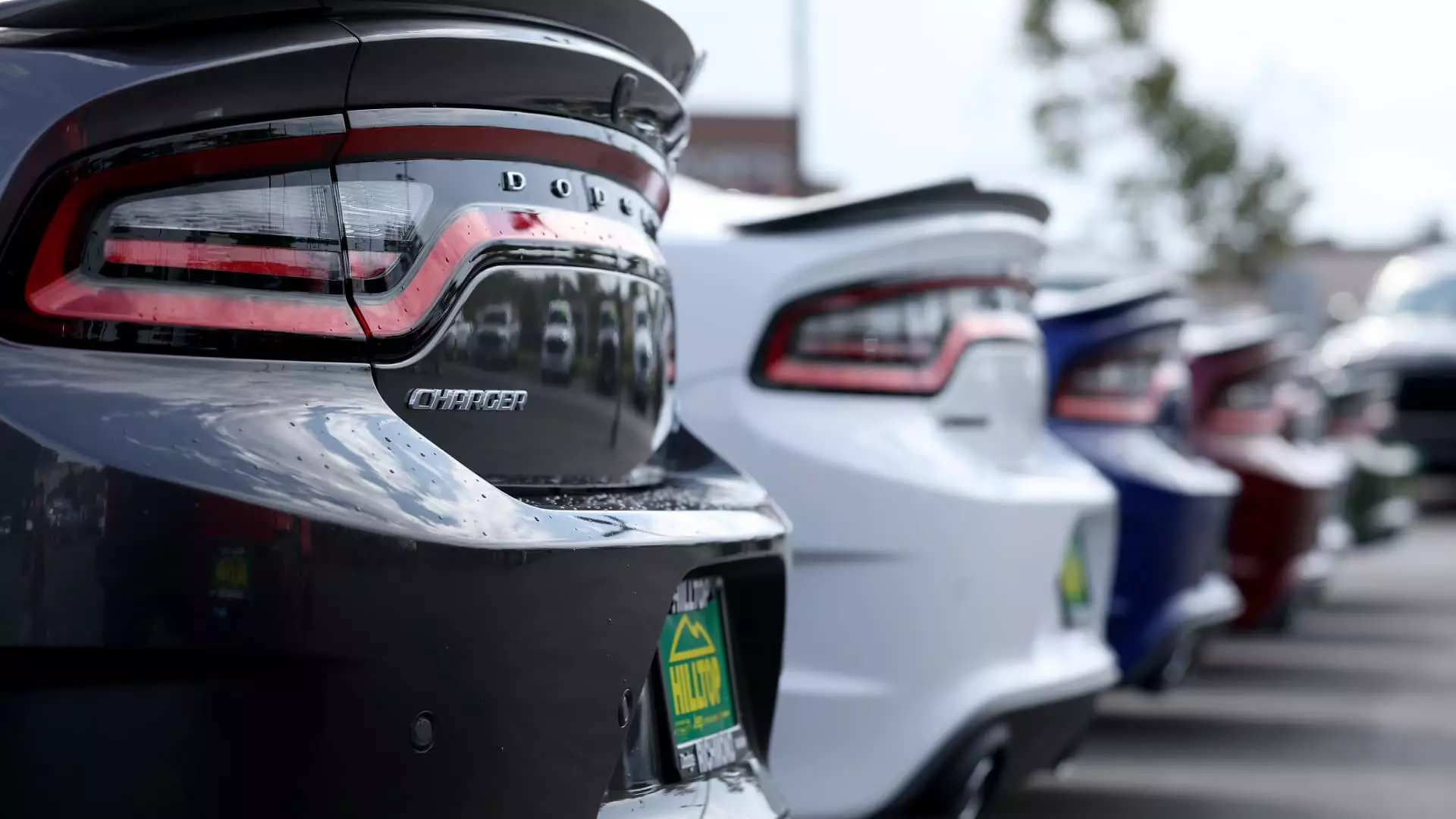The European automotive sector is nearing a tipping point, confronted with challenges that are reshaping its landscape. Early Monday marked a concerning day for prominent automakers, as both Stellantis and Aston Martin reported profit warnings, driving a visible decline in their market shares. These developments come against a backdrop of fierce global competition and persistent difficulties within the world’s largest automotive market, China. The implications of these warnings extend beyond mere financial metrics; they signify a broader shift in market dynamics requiring critical examination.
Stellantis, the Franco-Italian conglomerate known for its diverse lineup—including Chrysler, Jeep, and Maserati—has significantly revised its 2024 outlook, expressing concerns over worsening “global industry dynamics” and rising competition from Chinese firms. The company’s latest guidance reflects a grim reality, as it anticipates an adjusted operating income (AOI) margin between 5.5% to 7.0%—a stark adjustment from its earlier expectations of double-digit margins.
This recalibration is emblematic of the pressures faced by traditional automakers in an evolving industry. Stellantis has explicitly attributed its forecast adjustments to dwindling sales across various regions and a newly dimmed market outlook. The intensifying competition has emerged not only from increased domestic production but also from the rapid advancement of electric vehicle (EV) technology amongst Chinese manufacturers. Analysts from ING underscore this shift, pointing out that European carmakers are finding it increasingly difficult to maintain competitive advantages as the new vehicle sales struggle to recover to pre-pandemic levels.
Moreover, Stellantis’ revised projections signal deeper issues within the company, including a substantial cut in its anticipated industrial free cash flow—from a previously positive forecast to a worrying range of minus €5 billion to minus €10 billion. Such decreases raise questions about the corporate strategies in play and the long-term viability of Stellantis’ operations.
In a parallel development, Aston Martin—a British luxury brand renowned for its association with the James Bond franchise—has revised its profit margin and production targets downward, noting a reduction of about 1,000 units. The announcement is alarming for stakeholders as the brand acknowledges “disruption in the supply chain” alongside persistent macroeconomic headwinds in China affecting its bottom line. The company projects that its earnings before interest, taxes, depreciation, and amortization (EBITDA) for 2024 will fall short of the previous year’s figures.
Aston Martin’s struggle reflects a broader trend affecting luxury automakers who typically rely on exclusivity and brand prestige to sustain demand. Yet, with ongoing supply chain issues, rising production costs, and geopolitical uncertainties—in particular related to supplier relationships and materials—these companies are under unprecedented pressure. The forecast of a full-year gross margin falling below the 40% threshold starkly contrasts with earlier expectations, revealing significant vulnerabilities.
As Aston Martin’s stock experienced a dramatic plunge of around 23% in response to these warnings, investors and analysts alike are left questioning the brand’s operational resilience.
The woes of Stellantis and Aston Martin are underscored by similar troubles at Volkswagen, which recently slashed its annual outlook amidst a weakening macroeconomic environment. With new projections estimating an operating return on sales of 5.6%, down from a previous forecast of up to 7.0%, Volkswagen’s struggles further highlight underlying issues permeating the industry. The automaker cited poor performance within its passenger car and commercial vehicle segments as key contributors to this downward revision.
What is particularly concerning is the observation that European manufacturers are increasingly lagging behind their Chinese counterparts, which are rapidly expanding their electric vehicle market share. This paradigm shift towards sustainable and innovative automotive solutions is putting European firms on the defensive. As they scramble to catch up, the urgency to adapt to electrification and changing consumer preferences becomes starkly apparent.
The simultaneous warnings from Stellantis, Aston Martin, and Volkswagen signify a critical juncture for European automakers, who must now navigate a complex and challenging landscape. The confluence of heightened competition, supply chain disruptions, and changing market demands requires a reassessment of strategies across the board.
As the automotive industry faces an undeniably transformative period, stakeholders must prioritize innovation, flexibility, and strategic partnerships to secure their foothold. Whether through enhanced investments in electric vehicle technology, revamping operational efficiencies, or redefining consumer engagement strategies, the pathway to recovery remains fraught with challenges. Ultimately, the questions raised by these profit warnings may herald a new era, where adaptation is no longer optional but vital for survival in the global automotive arena.

